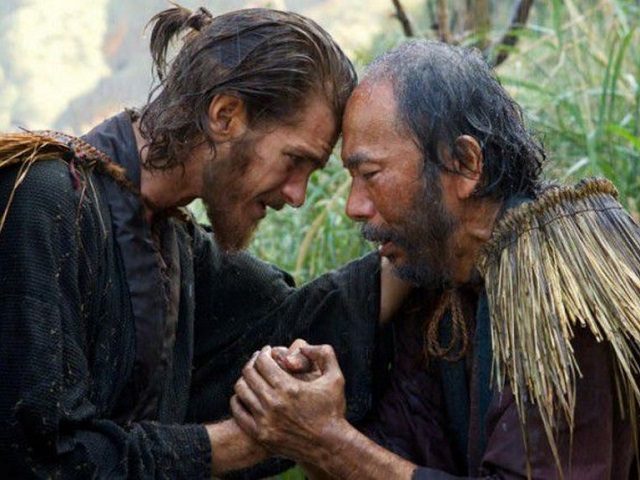Martin Scorsese is rolling out his new film Silence to a select audience of some 400 clerics and their guests when it premieres in the Vatican Tuesday.
Although Pope Francis is not expected to attend, the Paramount Pictures screening will be held Tuesday evening at the Jesuit-run Pontifical Oriental Institute, located on extraterritorial property in Rome controlled by the Holy See.
Set in Nagasaki in 1633, Silence is an adaptation of the award-winning 1966 novel by Japanese author Shusaku Endo, and follows the quest of two Jesuit missionaries (played by Andrew Garfield and Adam Driver) to find their missing mentor (Liam Neeson) who has reportedly renounced the faith under persecution from hostile Japanese authorities.
Sent to the far East, the two young priests, Sebastian Rodrigues and Francisco Garrpe, full of ideals and enthusiasm, soon collide with the harsh reality of Tokugawa Japan and brutal Christian persecution. Anyone suspected of embracing Christianity is compelled to trample a sacred Christian image (fumie): those who refuse are tortured and killed while those who comply are ridiculed and forced to live on the margins of society.
Forced to witness the horrific torture of Japanese Christian converts, Father Rodrigues eventually yields and steps on the fumie, after supposedly hearing the voice of Christ telling him, “Trample! Trample!”
In the book, after trampling on the fumie, Rodrigues lives on for another thirty years under house arrest, during which time he turns government informant and agrees to write a disavowal of Christianity, all the while continuing to believe he is a Christian in his heart.
Critics have accused the controversial novel of espousing a “sinister theology” that would divide a person’s external actions from internal convictions and beliefs, reducing Christianity to an interior understanding with God rather than a public witness.
Martin Scorsese is no stranger to theological controversy.
In 1988, he released the screen version of the Last Temptation of Christ, based on the 1960 novel by Nikos Kazantzakis, which was banned by the Catholic Church.
Despite Scorsese’s claim that the film was “not based on the Gospels but upon this fictional exploration of the eternal spiritual conflict,” it was widely protested by Christian groups. In the film, a confused Jesus struggles with his nature as both human and divine, and faces temptations including fear, doubt, depression, reluctance, and lust.
The U.S. Catholic Church called the film “morally offensive,” and spokesman Bishop Anthony G. Bosco said of the film, “I looked in vain for the message of love. Scorsese has given us an angry Christ, a bumbling Christ, a Christ more of this world than the next.”
For her part, Mother Angelica, a Catholic nun and founder of Eternal Word Television Network (EWTN), called Last Temptation “the most blasphemous ridicule of the Eucharist that’s ever been perpetrated in this world.”
For his screen adaptation of Silence, Scorsese once again enlisted the help of writer Jay Cocks, who had assisted in revising the script for The Last Temptation of Christ. Jesuit priest Father James J. Martin, editor-in-chief of America Magazine, served as theological consultant for the film.
Scorsese has said, “I’ve always wanted to do films of the spirit, spiritual films, but religion gets in the way.”
In the case of Silence, the filmmaker seems to have organized religion on his side.
Follow Thomas D. Williams on Twitter Follow @tdwilliamsrome

COMMENTS
Please let us know if you're having issues with commenting.